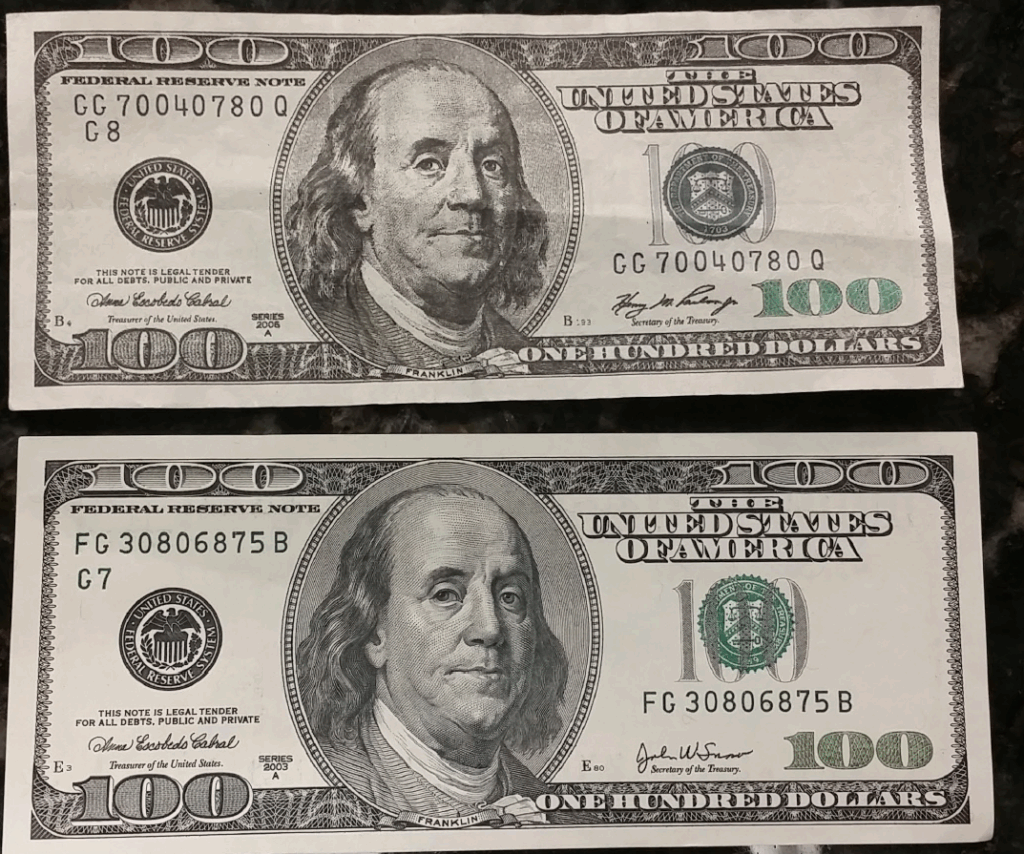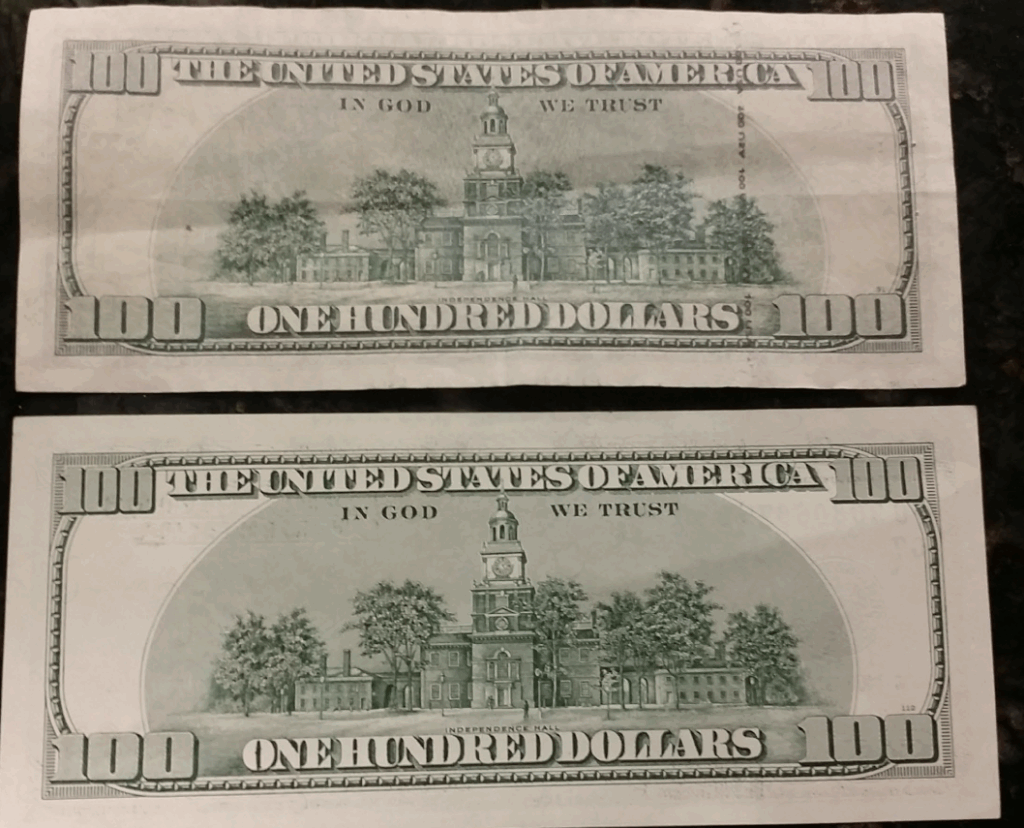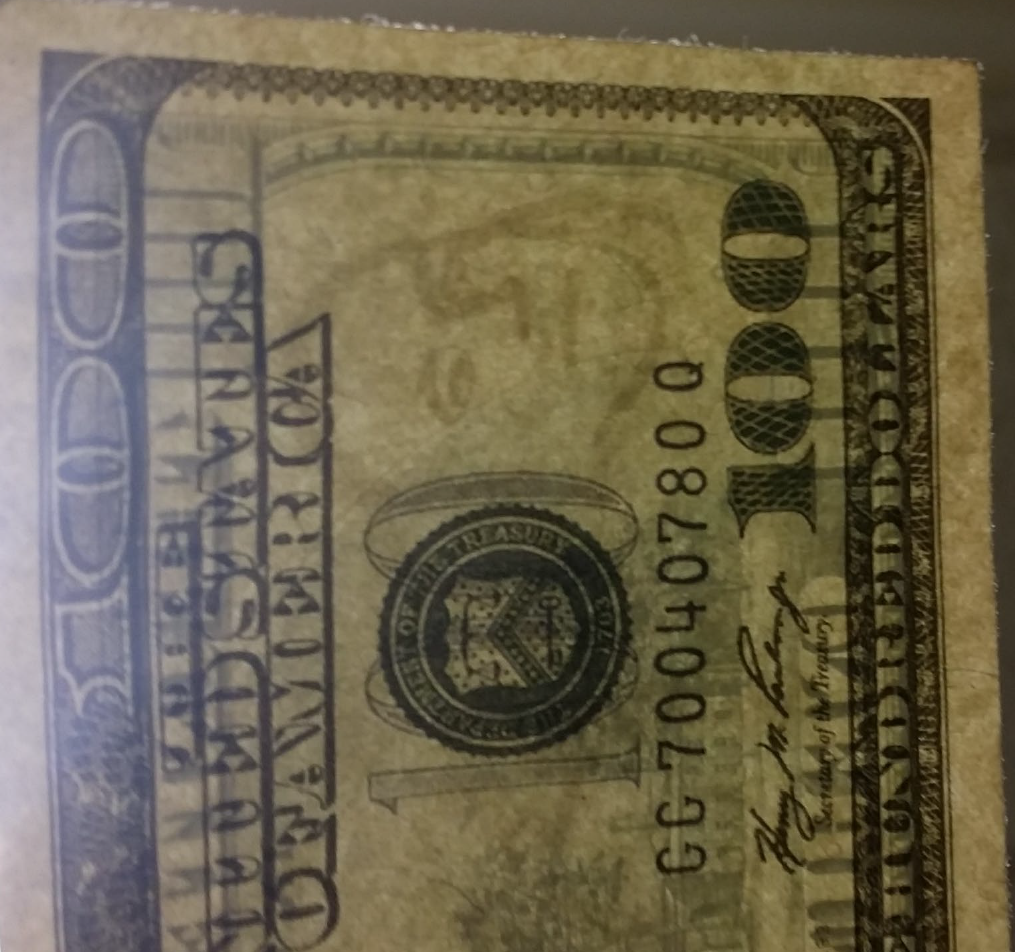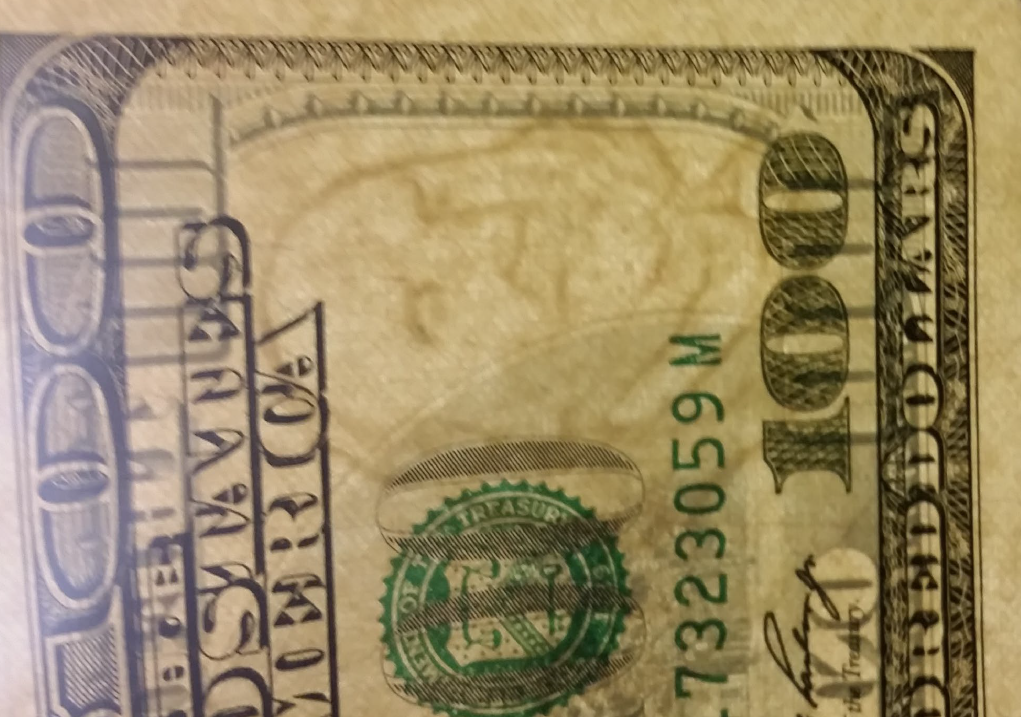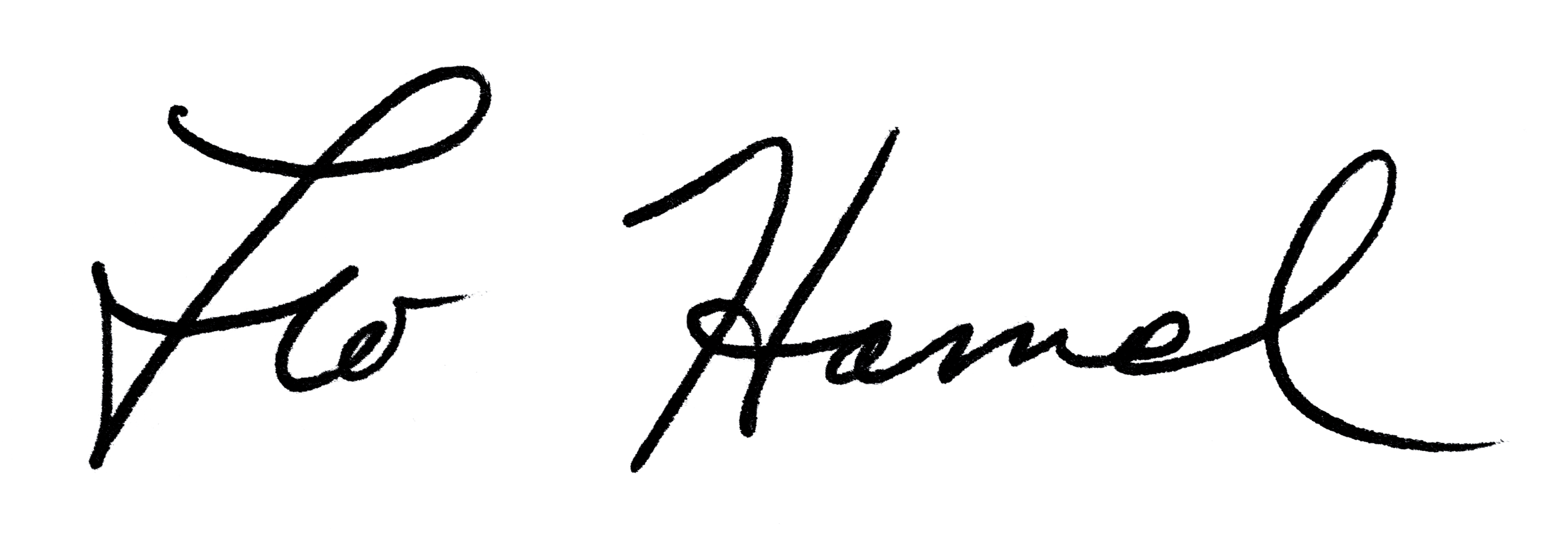
Leo Hamel Fine Jewelers Policy Letter
Spotting Counterfeit Bills
We have rarely received any counterfeit money in all the years of doing business, but it does exist. Whenever we receive $100 bills, especially from a vendor, we should pay attention to spot any that don’t look right. Do this as you are counting it in front of the customer because once you take the money away from their sight, you can no longer claim that you found a fake bill as they could claim you switched it.
Here are the pictures of one counterfeit bill (top) versus a real bill. The serial #s in upper left side and lower right side, the seal on the right side, and the center portrait are printed with black ink not green. The shiny number 100 in lower right corner is too green and too shiny on the fake bill. The portrait of Franklin in the center doesn’t have the crisp dots of the real one, the border designs all look fuzzy and weird, and the internal watermark portrait of Franklin looks like he has a mustache. And it looks like they printed what should be the internal stripe (the one you hold the bill up to the light to see) on the back.
Always look at the ink color on all bills first, as that is the first dead giveaway.
To try and get reimbursed for counterfeit bills taken in, all large quantities of $100 bills are bundled together with the date and name of the customer/vendor that gave them to us. When the bank deposit is made, these bundles are presented to the bank teller separately so that she can check them for counterfeit bills separately. If a counterfeit bill is detected, get it back from the teller along with the slip with name and date of who gave it to us so we can take it back to that person for reimbursement. It will not be possible to get reimbursed by a customer but may be possible from a vendor.
If a customer or vendor ever gives us a counterfeit bill, we must note in Business Mind and with Wholesale that we do NOT ever accept cash from that customer or vendor again. Although in the case of vendors, if it is a well-known vendor and is willing to repay us for that counterfeit bill and any others that are detected in the future, we can continue to accept cash from that vendor as long as we have more of that vendor’s merchandise on hand than the cash we are accepting, or we take the cash to the bank to be verified before handing over the merchandise we are selling to that vendor. Michel Mottale is the only exception to that rule.
